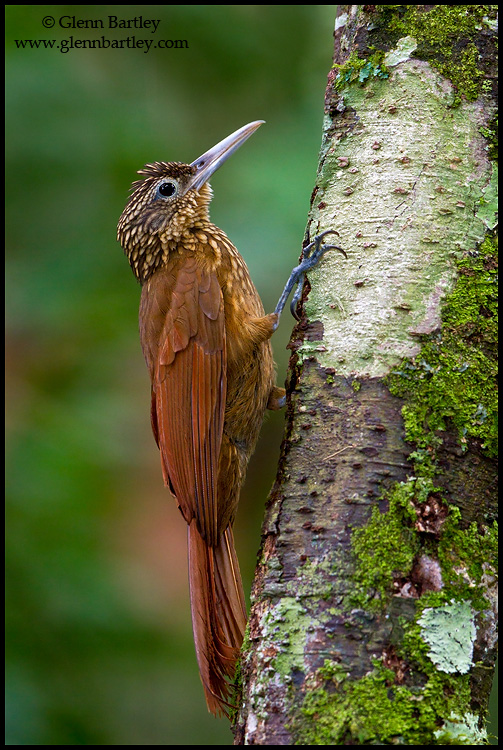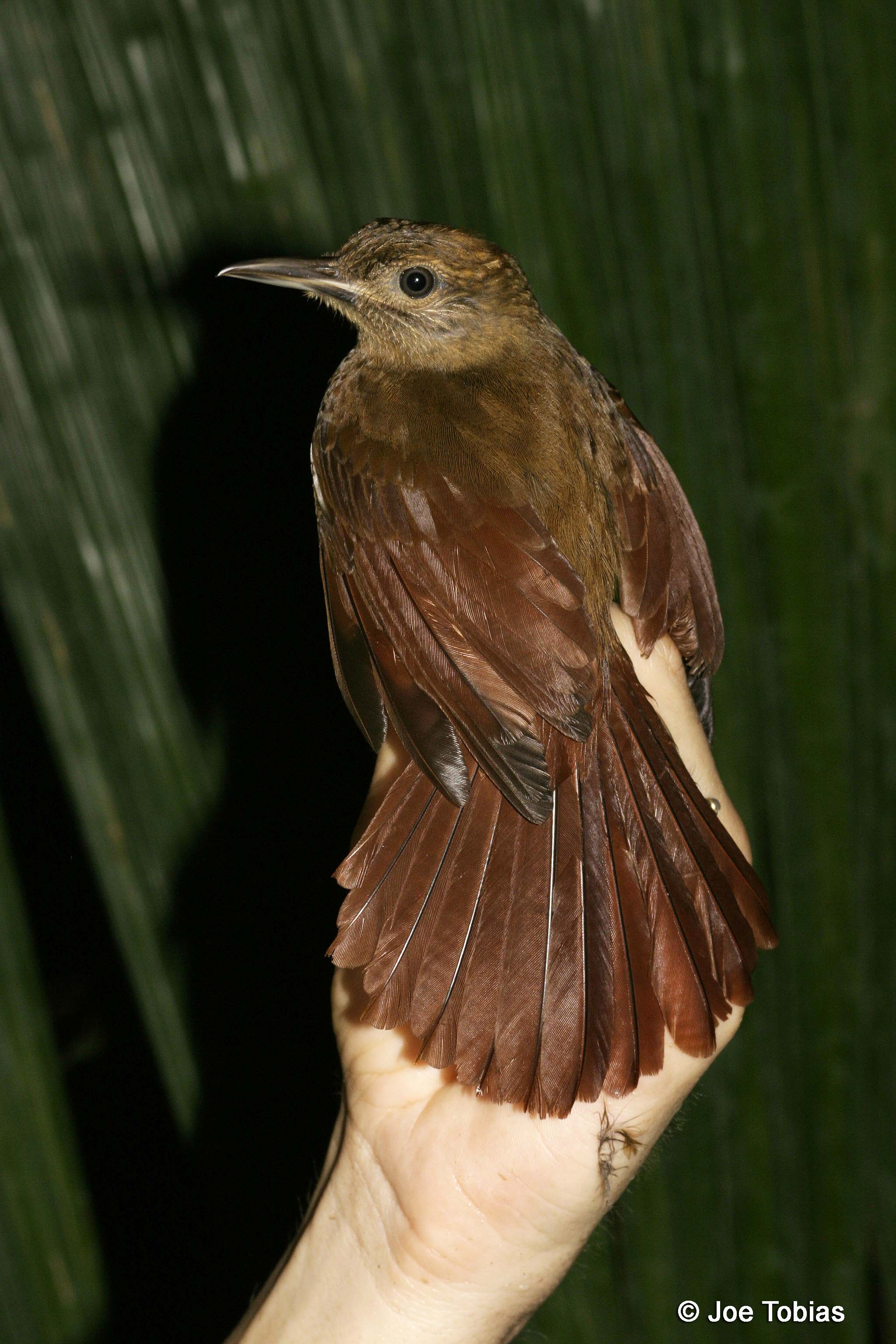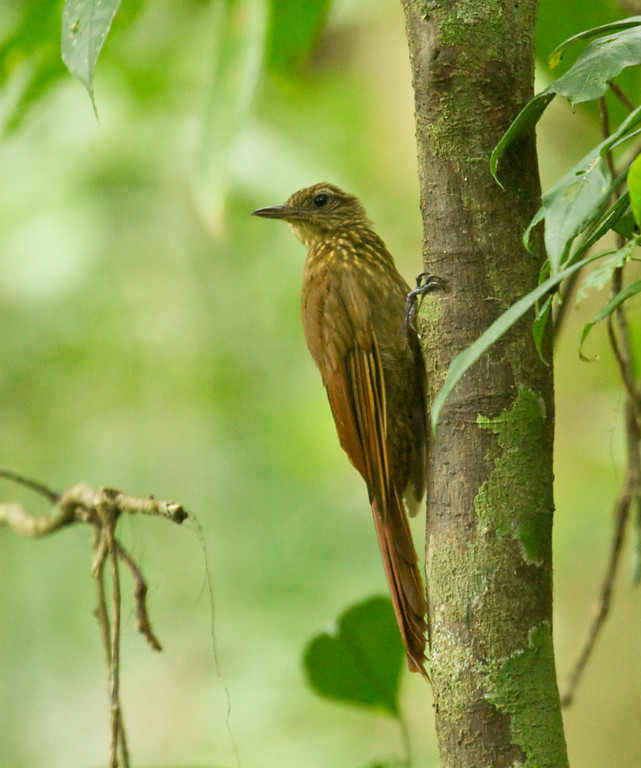
Deconychura longicauda
TAXONOMY
Deconychura longicauda Pelzeln, 1868.
OTHER COMMON NAMES
French: Grimpar а longue queue; German: Langschwanz-
Baumsteiger; Spanish: Trepatronco de Cola Larga.
PHYSICAL CHARACTERISTICS
7.5–8.5 in (19–21.5 cm). Has a relatively long tail and a stout,
chisel-shaped bill. Overall coloration is rufous-brown, redder
on the rump and tail, with a buff-colored throat.
DISTRIBUTION
Occurs throughout much of tropical Central and South America,
from Honduras in the north, through Costa Rica, Panama,
and parts of Venezuela, the Guianas, Colombia, Ecuador, and
Amazonian Brazil, Peru, and Bolivia. It has disjunct populations
in the northern parts of the range, which could represent
separate species.
HABITAT
Occurs in humid tropical and montane forest, especially in terra
firme (or unflooded) forest. Occurs in the lower and middle
levels of the canopy. Occurs as high as about 4,300 ft (1,300 m).
BEHAVIOR
Usually occurs singly or in pairs, or sometimes in mixedspecies
foraging flocks. The song is a series of high-pitched
whistled notes, but it varies among geographic races (which
may actually be separate species).
FEEDING ECOLOGY AND DIET
Forages on tree-trunks and stout branches.
REPRODUCTIVE BIOLOGY
Lays two or three eggs in a nest in a tree-cavity or abandoned
woodpecker hole. The sexes share incubation and care of the
nestlings.
CONSERVATION STATUS
Not threatened. A widespread and locally abundant species.
SIGNIFICANCE TO HUMANS
None known.
Photo Gallery of - Long-tailed woodcreeper




 Animalia Life
Animalia Life